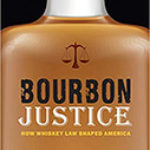The War On Neighborhoods: Policing, Prison, And Punishment In A Divided City

Authors: Ryan Lugalia-Hollon and Daniel Cooper
Publisher: Boston: Beacon Press, 2018. 264p.
Reviewer: Raff Donelson | July 2019
The War on Neighborhoods is both a stunning indictment of the public safety system and a positive proposal to fix that broken system. While focused on the Westside Chicago community of Austin, the arguments that Ryan Lugalia-Hollon and Daniel Cooper raise have national import. This concise, eminently readable book weaves personal narratives with quantitative social science and broader national history, but remains on message. That message has three key parts: one, mass incarceration is an expensive and bad investment; two, mass incarceration causes social ills when it was meant to cure social ills; and three, both types of ills can only be remedied by massive reinvestment in failing neighborhoods.
Lugalia-Hollon and Cooper spend considerable time on the first part, the indictment. They argue persuasively that mass incarceration is a big, bad investment. First, a comment on the size of the investment. The authors tell us that “[s]ince the 1970s, imprisonment has been the fastest growing of all public investments in Illinois” (p. 35). They also detail what they call million-dollar blocks, i.e., “residential census blocks where state government commits to spending over a million dollars to incarcerate residents over the life of the prison sentences when considering the average cost of each prisoner” (p. 35). As there are many million dollar blocks in Chicago and elsewhere in our country, mass incarceration is a hefty investment.
To see why mass incarceration is a bad investment, we have to see what the returns on the investment were supposed to be. Mass incarceration is a weapon of government in the so-called “war on drugs,” so it is supposed to reduce drug use. Mass incarceration is also a tool to reduce violent crime. On both of these scores, Lugalia-Hollon and Cooper highlight that mass incarceration not only fails, but actually backfires.
Consider their case regarding the drug war. If this war were succeeding, drug use would decrease; and if the war were merely failing, drug use would remain constant, despite the intervention. In reality, drug use has increased since the war on drugs began in earnest in 1980. Relatedly, drug prices have fallen over the same period, a sign that supply has increased. Lugalia-Hollon and Cooper also point out how laws that authorized the seizure of property used for committing crimes – laws that were supposed to deter drug dealing – may have produced new drug dealers. It is easy to see why. Seizing a family home because a parent dealt drugs therein means that any opportunity to amass and pass on generational wealth evaporates, possibly then causing children and other dependent relatives to turn to illegal ventures to make ends meet.
Thankfully, the United States Supreme Court has recently stepped in to halt counterproductive asset seizures. In Timbs v. Indiana, decided in October 2018 (after the publication of the book), the Court held that such asset seizure may run afoul of the Eighth Amendment’s prohibition on excessive fines, and the Court further held that this Eighth Amendment protection is applicable to state and local governments via the Fourteenth Amendment. Even with the Timbs decision, the basic story from Lugalia-Hollon and Cooper remains true — mass incarceration is an expensive weapon the government uses in waging its backfiring war on drugs.
On the question of violent crime, it is no secret that Chicago is home to large numbers of murders and other violent offenses. Various political actors have introduced mass incarceration to stem such crime. Lugalia-Hollon and Cooper argue, however, that mass incarceration backfires here too. As the authors amply show, mass incarceration does not address the social determinants of violent crime, and indeed may exacerbate the underlying problems.
The authors are equivocal about what causes crime. On the one hand, they say, “[i]t [violence] cannot be explained away by individual choices, nor can it be fully understood by looking at environmental and external conditions” (p. 58), a line that sounds moderate and unremarkable. But later they write: “[c]riminal behavior is never natural; environments and experiences, not genetics or inherent traits, are what ultimately drive some people toward harm and wrongdoing” (p. 67). Despite this seeming equivocation, the emphasis of the book is that the major determinants of crime are social, not individual. The authors cite economic downturn in places like Austin, bad policies for policing gangs, failure to prosecute those who perpetrate sexual violence against women, absent parents, bad police incentives, the defunding of schools, and more. With the exception of the point about sexual violence, locking more people up addresses none of these criminogenic social problems. That is not the worst of it though, for Lugalia-Hollon and Cooper also explain how mass incarceration can inflame, or even create, some of those criminogenic social problems. For instance, Lugalia-Hollon and Cooper suggest that absent parents can lead to criminal behavior in children, but mass incarceration often produces the absence in the first place. If society found another way to deal with parents’ criminal behavior, it might stave off downstream criminal behavior, but society has not really sought another way.
Following their indictment of the public safety system, the authors offer a positive proposal on how to make things better. Lugalia-Hollon and Cooper argue that the way to reduce crime, drug abuse, bad policing, etc., in other words, reduce many of the problems mentioned in their book – is to reinvest in failing neighborhoods. For example, the majority of youth homicides are in hollowed out places across the US; places that industry forgot and where mass incarceration has swept away the bulk of their residents. Changing this means rejuvenating such neighborhoods. Another example — if we know that a subset of the mentally ill are given to criminality without proper support, we have to help these people. But this is not what Chicago has done. “Chicago closed half of its mental health clinics in 2011, almost all of which were located in South and West Side neighborhoods,” that is, the most underserved parts of the city (p. 102).
The authors further define their own proposal by distinguishing it from things that they claim will not work. These include several popular strategies that they claim are too limited or too austerity-based. For instance, some think that we will end mass incarceration and its attendant problems by drug reform alone. Lugalia-Hollon and Cooper explain why this will not work: “[t]he majority of people sent to state prison over the past several decades were incarcerated not for drug offenses but for violent or property offenses” (p. 154). Drug reform is thus too narrow. Other reform-minded folks think that mass incarceration will end with the election of progressive prosecutors such as Kim Foxx (in Chicago), Wesley Bell (in St. Louis), and Rachael Rollins (in Boston). As the authors explain, prosecutors’ “ability to divert cases away from prosecution often hinges on the presence or absence of reliable community supports” (p. 158). A Chicago judge interviewed for this book noted that counsel often asks for juvenile offenders to be sent somewhere besides a detention facility, but the judge notes that she will not do this when there are no such well-funded places. In other words, if the community is too stingy, too austere, even a progressive prosecutor will be immobilized.
In summarizing the key arguments of the book, I have not offered much by way of negative criticism. That is because I have none. This is an excellent book. Though I have focused on its core message, it is also filled with poignant stories of Chicago’s (and America’s) struggle to produce true criminal justice. These richly told stories alone make the book worth anyone’s while, even those who might dissent from its authors’ politics. I recommend this book for students and academics in fields from law and politics to history and applied philosophy. But it is not just a book for academics. I recommend it to lawyers and judges, social workers and teachers as well. I also recommend it to Chicago’s new mayor and to every voter.
Raff Donelson, JD, PhD, is Assistant Professor of Law and Philosophy at Louisiana State University.


